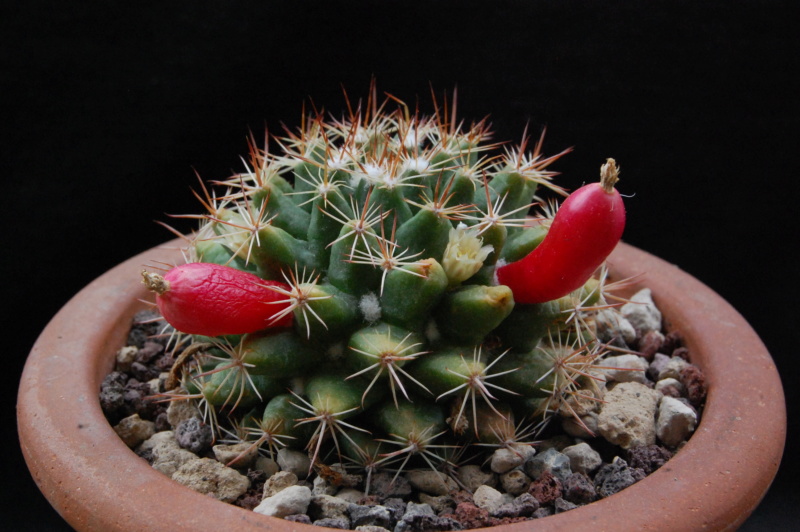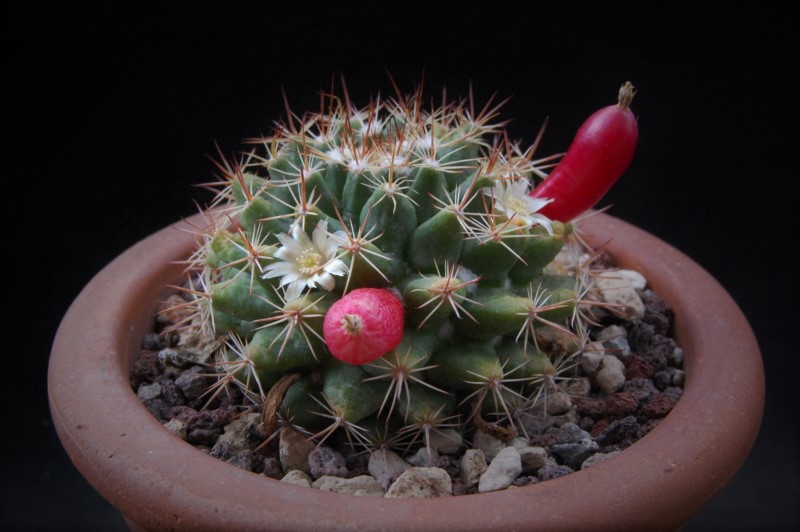Mammillaria mammillaris (Morison) Karsten. = H. simplex (Haw).
On another page members will see letters on the subject of the correct name of this species. Craig lists several synonyms, but Borg takes. M. simplex Haw. as the correct name.
The description is taken from the Mammillaria Handbook.
Body: Simple and caespitose, globose to short, cylindric with sunken apex, to 20 cm. high.
Tubercles; arranged in 8 and 13 spirals, glossy light to dark green conic, nearly tarete, with milky sap, 7/12 mm. long, 4/8 mm. wide at base.
Areoles: round 2 - 3 mm. wide, with dense light brown wool in youth. Axils with scant wool.
Spines: Centrals 3 - 5, 7 - 8 mm, long, upper ones longer, all subulate, straight or upper occasionally slightly bent, all smooth, reddish brovm
with darker tip, becoming grey, spreading porrect. Radials 10 - 16, 5 - 8 mm, long acicular straight smooth, reddish, later grey, nearly
horizontal to somewhat ascending.
Flowers: funnelform, 10 12 mm. long, July - September. Outer perianth segments brownish green top row dark brown, elliptical, tip long micronate, margins entire (?). Inner perianth segments whitish cream to pale yellow, lanceolate, tip acute, margins entire (?). Anthers yellowish,
Style yellowish, Stigma-lobes 5 - 6, greenish yellow.
Fruit: carmine red, clavate, 10 - 20 x 6 - 8 mm. with dried perianth not persisting. Seeds brown, minute, roughened.
Distribution: Northern Venezuela and adjacent Islands,
Type Locality: none given but reported from Venezuela and Paos, Curacao and Margarhita Islands,
From "The Journal of the Mammillaria Society" - Vol.I n.6 - June 1961
Mammillaria mammillaris SB 1841
SB 1841 - Cepita, Pescadero - Colombia


